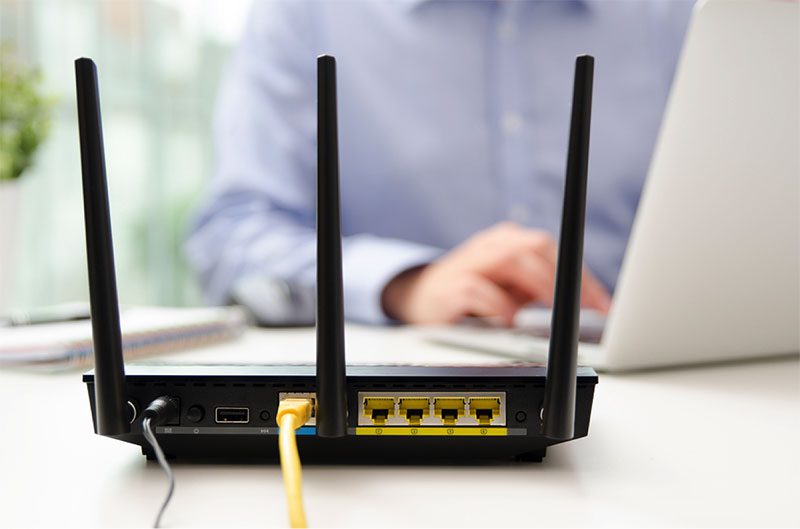Are you ever in the middle of a Zoom meeting when suddenly your internet connectivity goes down? This exact scenario has caused me to nearly lose my mind many times. Internet connectivity is vital, especially for those of us who continue to work remotely. Even though I pay monthly fees to an internet provider and had my router professionally set up, I find myself still spending too much time watching my computer grind.
These issues can be fixed quickly and easily within a few minutes.
There are many factors that affect internet speeds. While there are some tricks and guidelines you can use to increase your wireless coverage, the most important factor is where your router is located. It’s not always in the exact location that the technician installed it. Continue reading to find out where the router should be placed in your home and how to speed up Wi-Fi speeds.
Get started with the right router
First, choose the right equipment or router. There are many routers available, and your home’s layout will dictate the type of network you require.
A single wireless access point is sufficient for most apartments and homes smaller than 1,500 square feet. If your router is older than a few years, it may be worth upgrading to a model that supports wireless 802.11ac or dual-band support. This will allow you to enjoy the fastest wireless speeds and the best coverage.
It’s worth looking into upgrading to a mesh network for larger, multi-level homes. This will ensure consistent coverage across the entire house. If you discover that a corner of your house doesn’t have strong wireless coverage, add another node. Problem solved.
For more information, visit our list of the top mesh routers for the year. If you are unsure where to start when choosing your next router, refer to our buying guide.
It doesn’t matter if you have a single or mesh network access point, it still matters where the primary access point is located.
Your router should be placed where it is most convenient.
The modem is typically installed on the wall at the far end of the house when you move into your first apartment or home. This is because this is where the line enters the house. The technician’s job is to connect the lines, not optimize the network. This is your job.
It is tempting to leave everything as the technician has set it up. It’s unlikely your router will be in this location.
Choose a central location
Routers transmit the signal in all directions. If it is left in a corner of your house, you will lose a large portion of your wireless coverage. To optimize your signal, it is best to move your router to a central place. It can be difficult to install a router across your house from the modem. You may need to run a CAT5 cable underneath the floor, or hire the assistance of power line adapters. The improved wireless coverage will make it worthwhile.
Lift the router
Routers spread signals downwards so it is best to place the router as high up as possible. Mount it in a hidden place, such as on a bookcase or on the wall.
Other electronics should be avoided
Pick a location away from large metal objects and other electronics. There are higher chances that interference will occur if there are large obstructions, walls, or electronics close to your router.
The microwave is a particular electronic to avoid. It emits strong signals in the 2.4GHz band (the same wireless band that your router operates in).
These antennas with funny looks actually have a purpose
Some routers don’t have an antenna, while others have eight. These antennas direct the signal. Do not position multiple antennas in the same direction if you have more than one router. Make them parallel to each other — place one horizontally, and the other vertically. To cover many angles, you can change the positions of the antennas.
You can map the signal
It may be useful to map your signal to determine if there are any problems or gaps in your coverage.
Being one of the leading news writers of the medicalmarketreport he writes on other news sites like media.market.us, DailyHeraldBusiness, and many more., Steven holds a specialization in the domains of business and technology. The passion he has for the new developments in connected devices, cloud technology, virtual reality, and nanotechnology is seen through the latest industry coverage which is done by him. His take on the consequences of digital technologies across the world gives his writing a modern and fresh outlook.
